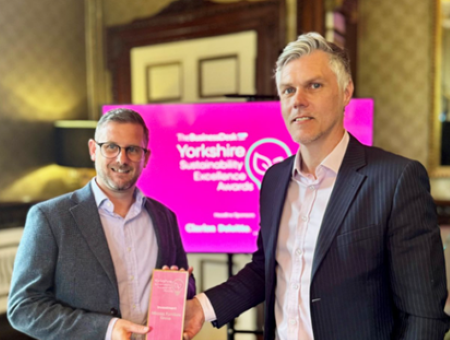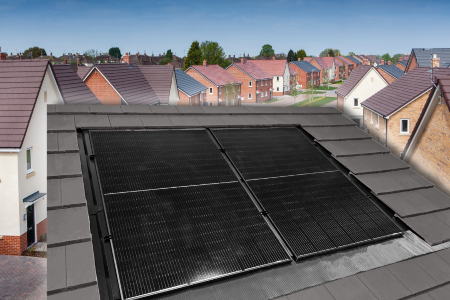Julia Nichols, Group Strategy and Regulatory Director at Persimmon Homes, reveals the challenges facing housing developers today and advises on overcoming them
What is the history and heritage of Persimmon Homes?
Persimmon was founded in 1972 by Duncan Davidson, who remains Life President. Initially operating in York, our head office is still in the city. From the mid-1970s onwards Persimmon grew opening new operating companies in Anglia, the midlands, the southwest, Wessex and the Northeast. From the mid-1990s to mid-2000s Persimmon also acquired a number of other developers, including Ideal, Beazer and Westbury Plc.
Today we operate from 29 regional offices and employ around 5,000 staff and work with around 80,000 contractors. Last year we completed nearly 15,000 homes. We are proud to be a five-star builder in the HBF customer survey.
We are very aware of the crucial role we play in communities across the country which is one reason we take sustainability responsibilities seriously.
How does Persimmon homes promote sustainability?
We aim to embed sustainability across all our operations. It starts from our Values. Our Social Impact Value recognises the need to drive environmental improvements as well as leave a positive legacy in the communities we serve and strive to build as safely as possible. As part of this we have three sustainability pillars.
First, Building for Tomorrow, includes our stretching carbon-reduction targets. We aim to achieve net zero carbon homes in use by 2030 and be net zero in our operations by 2040. These commitments are supported by interim science-based carbon reduction targets, accredited by the blue-ribbon Science Based Target initiative. They are consistent with the Paris Accord.
The homes we currently develop are energy efficient, with an average EPC rating of a B, meaning that as well as producing lower carbon emissions they are cheaper to run for our customers.
Looking to the future, we have built two zero carbon homes as trials to develop the technologies and techniques to meet both the Future Homes Standard and our more stretching targets.
We have performed trials on our sites using more energy efficient equipment (e.g., hybrid generator/solar powered site cabin) to identify effective solutions to drive down carbon emissions. In addition, all of our offices and manufacturing facilities utilize 100% renewable electricity. In 2022 we also recycled 96% of waste from our sites and we planted nearly 150,000 trees on our developments.
Second, Transforming Communities, leaving a positive legacy in the communities we operate in. Well designed homes built in sustainable communities is clearly crucial to this. That is why we have a Placemaking Framework that guides our teams’ design and planning activity. We proactively engage with local authorities to understand what their priorities are and how we can help deliver them. We also have a dedicated Group Biodiversity Manager as part of our Sustainability Team, who supports our local businesses to ensure we are meeting this important agenda.
Beyond this we have programmes such as Community Champions that donates up to £6,000 per quarter from each of our 29 regional offices to local charities and good causes. This year alone the figure will be nearly £700,000 donated this way. The Persimmon Foundation also supports lots of important charities, such as Place2Be, the children’s mental health charity.
Third, Safe and Inclusive. This applies to our workplace culture as well as safety. The safety of our colleagues, customers and the local community is paramount, and this is something we discuss at every senior leadership team meeting. Housebuilding has traditionally been a very male environment, so we established a Women’s Network this year which I chair. It’s been extremely well received, encouraging women across the business to share their experiences. We’ve also invited external speakers to our network events to discuss various topics such as the menopause. We also have a network of mental health champions and support in place which I think our industry as a whole has got better at in recent years.
Our sustainability strategy is set by a Sustainability Committee, chaired by our Group Chief Executive. The Committee meets regularly throughout the year to set priorities and targets. It reports to Persimmon’s main board regarding sustainability matters.
What are the five key priorities that are underpinned by your sustainability approach?
Sustainability underpins all aspects of our operations and is considered throughout our value chain. Persimmon has five key priorities, which are supported by our sustainability pillars:
Build quality and safety: our ambition is to be trusted to deliver five-star homes consistently.
Reinforcing trust: in seeking to build a compelling brand we will place customers at the heart of our business, trusted to deliver the best value homes customers can be proud of.
Disciplined growth: maintain our stringent appraisal, investing in high quality land in the right areas.
Industry leading financial performance: sustain our industry leading margins and drive healthy profit and cash.
Supporting sustainable communities: actively part of the net zero carbon economy transition, the communities we operate in and efforts to widen opportunity.
As well as being a Value in its own right, delivering on our sustainability goals is crucial to achieving all of these five priorities.
What are the common challenges being faced by housing developers today?
The largest challenge is the affordability of homes in an era of higher mortgage rates.
How would you advise overcoming these challenges?
We are working to make sure we maintain our affordability advantage in the market, combining it with excellent customer service and consistent build quality. Our sales and marketing teams are also working hard to promote our homes in new ways, including new products and incentives that help address any barriers customers might have. The truth is there is still demand in the market and as we know, there is clear housing need. As an industry we are all having to work in new ways to help people get that foot on the housing ladder, especially since the end of Help to Buy.
What do you predict will be a common trend in housing development during 2024?
Next year is likely to be an election year and housing is clearly hotting up as a political issue. Beyond this, the impact of the Part L building regulations which make new homes 31% more energy efficient will be increasingly apparent.
What will Persimmon do to stay ahead of this curve?
We are engaging all major parties on housing issues, making the case that we want to be a partner delivering the new homes and communities that local people are often asking for. While housing is political, when you drill down it is striking that what many people want is similar: an opportunity for them or their family to be able to afford a good home nearby. The majority of Persimmon’s homes are bought by people moving from the local area. I like to think we help keep communities and families together.
On Part L, while the homes themselves are a little more expensive, we have developed marketing materials to demonstrate the net cost savings over the life of a mortgage when heating bills are taken into account. While new builds were already markedly more energy efficient than existing homes, the differential is only going to grow with Part L and then the Future Homes Standard in a few years’ time.
Read more news and exclusive features in our latest issue here.
Never miss a story… Follow us on:
Showhome
@Your_Show_Home
@Showhomemag
Media Contact
Joseph Clarke
Editor, Showhome
Tel: +44 (0) 1622 823 920
Email: editor@yourshow-home.com






